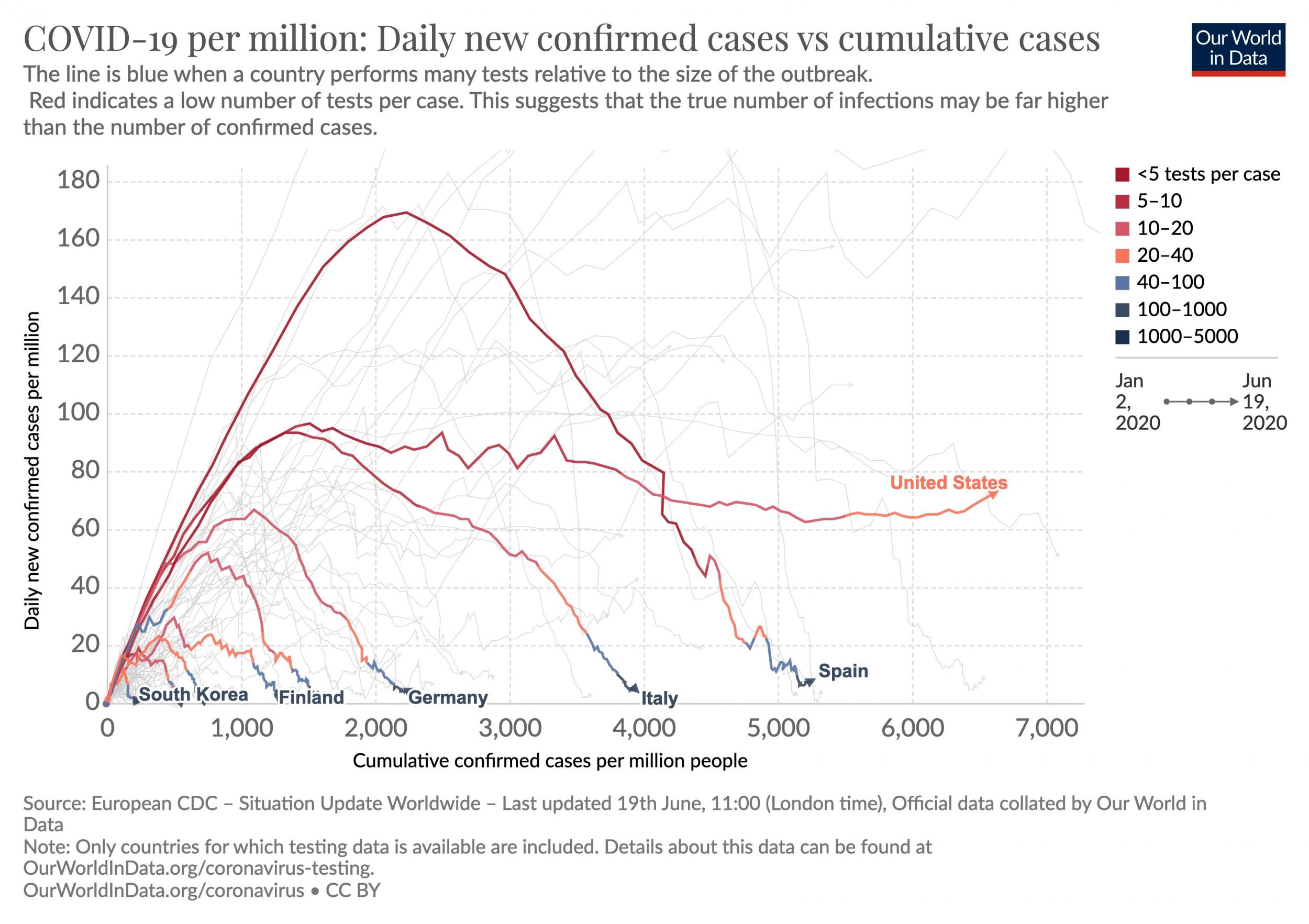

Although inflammatory markers such as C-reactive protein (CRP), D-dimer, and ferritin are not routinely measured as part of standard care, results from such measurements may have prognostic value. Laboratory testing should include a complete blood count with differential and a metabolic profile, including liver and renal function tests. The initial evaluation for patients may include chest imaging (e.g., X-ray, ultrasound or computed tomography scan) and an electrocardiogram. 1 Health care providers should closely monitor patients with these conditions until they achieve clinical recovery. Other underlying conditions associated with a higher risk of severe COVID-19 include asthma, cancer, cardiovascular disease, chronic kidney disease, chronic liver disease, chronic lung disease, diabetes, advanced or untreated HIV infection, obesity, pregnancy, cigarette smoking, and being a recipient of immunosuppressive therapy or a transplant. Patients who are aged ≥65 years are at a higher risk of progressing to severe COVID-19.

Clinicians who use SpO 2 when assessing a patient must be aware of those limitations and conduct the assessment in the context of that patient’s clinical status.

However, pulse oximetry has important limitations (discussed in more detail below). SpO 2 is a key parameter for defining the illness categories listed above. Critical illness: Individuals who have respiratory failure, septic shock, and/or multiple organ dysfunction.Severe illness: Individuals who have SpO 2 30 breaths/min, or lung infiltrates >50%.Moderate illness: Individuals who show evidence of lower respiratory disease during clinical assessment or imaging and who have an oxygen saturation measured by pulse oximetry (SpO 2) ≥94% on room air at sea level.Mild illness: Individuals who have any of the various signs and symptoms of COVID-19 (e.g., fever, cough, sore throat, malaise, headache, muscle pain, nausea, vomiting, diarrhea, loss of taste and smell) but who do not have shortness of breath, dyspnea, or abnormal chest imaging.Asymptomatic or presymptomatic infection: Individuals who test positive for SARS-CoV-2 using a virologic test (i.e., a nucleic acid amplification test or an antigen test) but who have no symptoms that are consistent with COVID-19.In general, adults with SARS-CoV-2 infection can be grouped into the following severity of illness categories however, the criteria for each category may overlap or vary across clinical guidelines and clinical trials, and a patient’s clinical status may change over time. Patients with SARS-CoV-2 infection can experience a range of clinical manifestations, from no symptoms to critical illness.


 0 kommentar(er)
0 kommentar(er)
